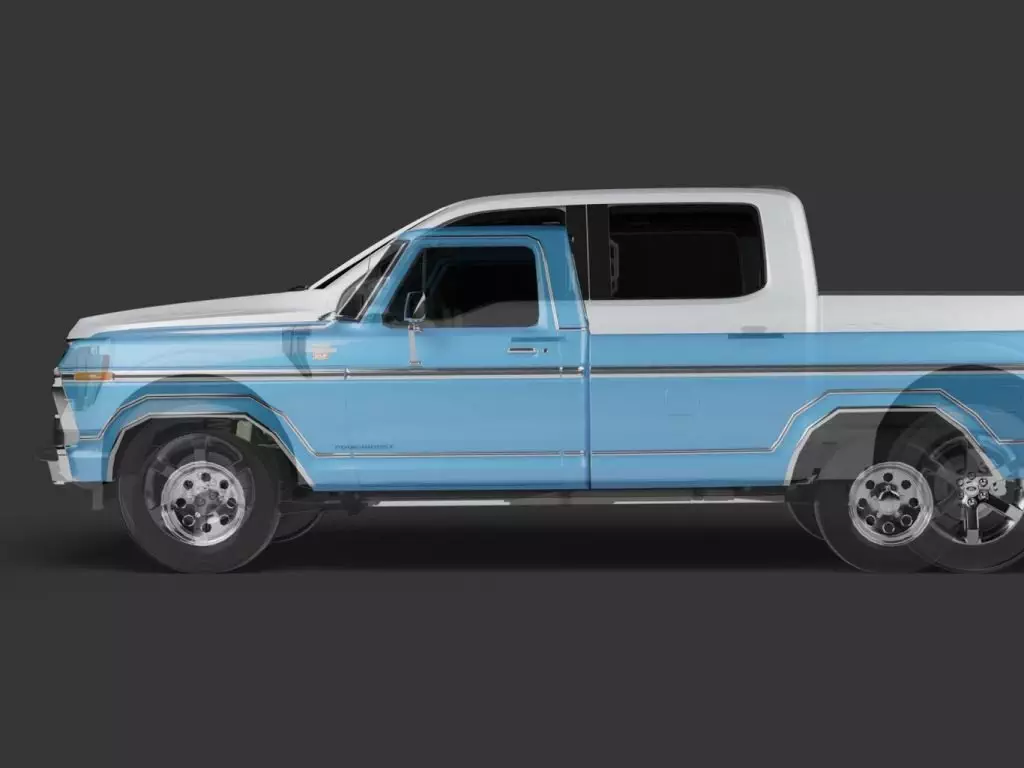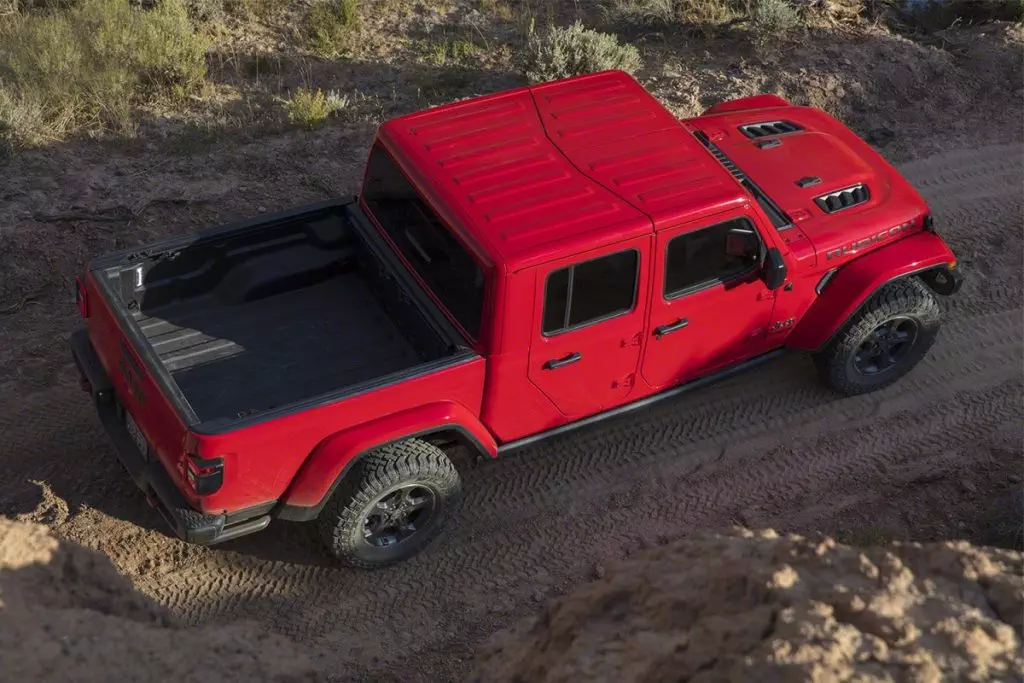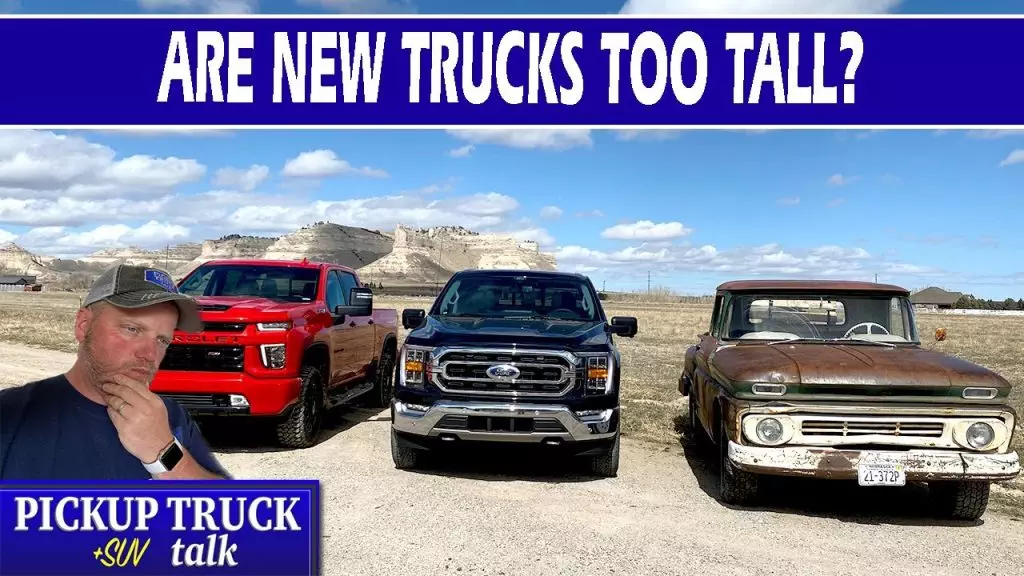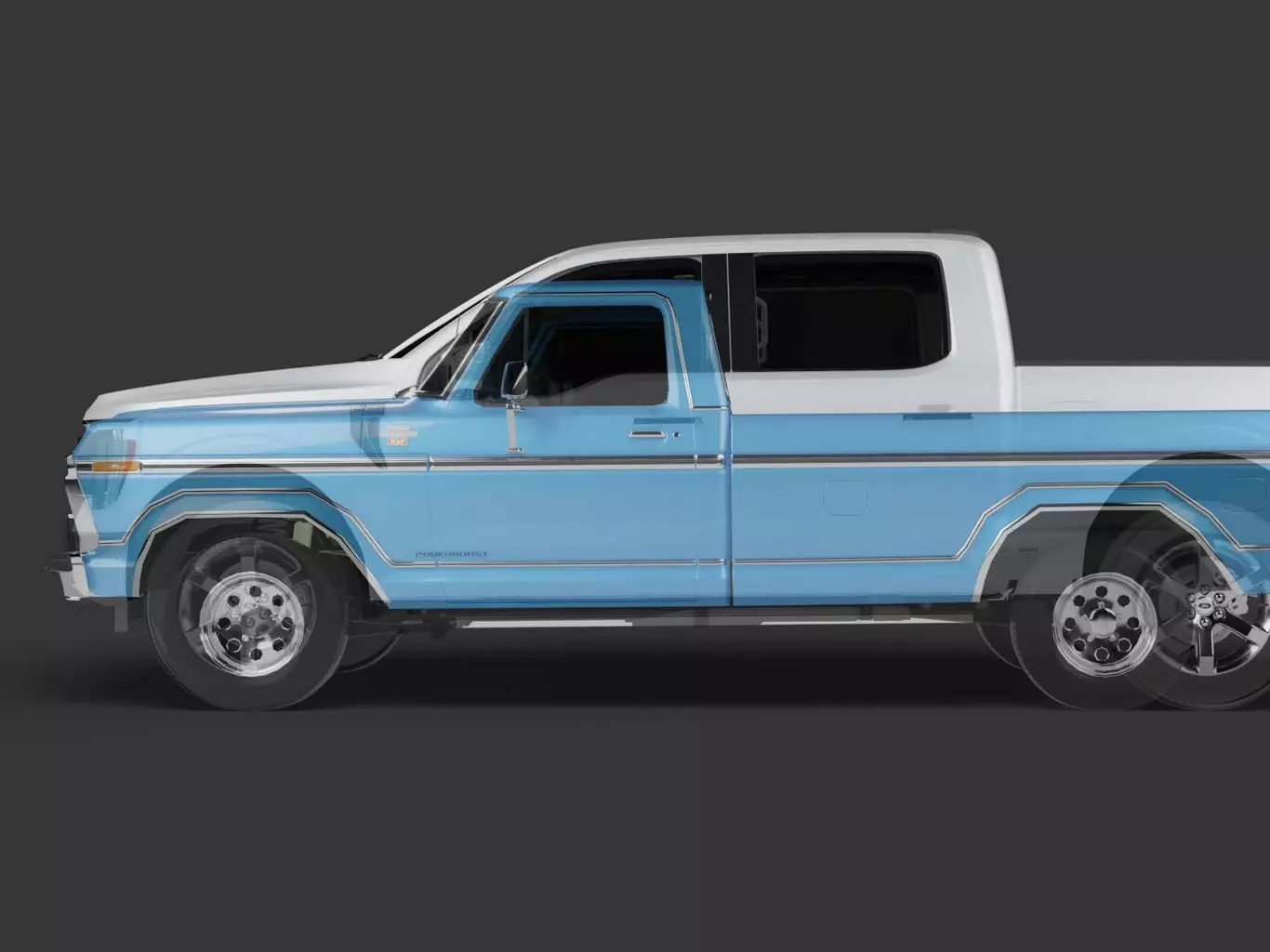In this article, we will explore the reasons behind the increasing size of trucks in recent years. We will discuss the factors that have contributed to this trend and the implications it has on various industries.
One of the main reasons why trucks have become larger is the demand for more cargo space. With the growth of e-commerce and online shopping, there is a need to transport larger quantities of goods efficiently. Additionally, many businesses are now using trucks for a variety of purposes, such as mobile offices and workshops, which require additional space. As a result, truck manufacturers have responded by designing bigger and more versatile trucks to meet these demands.
Another factor contributing to the increase in truck size is safety regulations. In order to comply with safety standards, truck manufacturers have had to incorporate new features and technologies into their vehicles. These include enhanced crash-test performance, better stability, and improved braking systems. To accommodate these safety features, trucks need to be larger in size. While these larger trucks may improve safety on the road, they also have implications for infrastructure, fuel consumption, and overall transportation efficiency.
Overall, the increase in truck size is a response to the changing needs and demands of various industries. While it provides advantages in terms of cargo space and safety, it also presents challenges in terms of infrastructure and environmental impact. As we continue to rely on trucks for transportation, it will be important to find a balance between these competing factors and ensure that the benefits outweigh the drawbacks.
The Evolution of Truck Sizes
In recent years, it’s hard not to notice the ever-increasing size of trucks on the roads. Whether it’s a massive pickup truck towering over smaller vehicles or a commercial truck hauling goods across the country, the trend of bigger trucks is hard to miss. But why have trucks gotten so big? In this article, we will explore the various factors driving the expansion of truck sizes and the impact it has had on the economy, regulations, infrastructure, and consumer preferences.
Early History of Trucks
To understand the evolution of truck sizes, we must first delve into their early history. Trucks were initially designed as a means of transportation for goods, dating back to the early 1900s. These early trucks were relatively small and had limited capacity, mainly used for local deliveries or within industrial settings. As the demand for goods transportation increased, truck manufacturers began exploring ways to enhance their cargo-carrying capabilities.
Factors Driving Truck Size Expansion
Several factors have contributed to the expansion of truck sizes over the years. One key driver has been the growth of commercial requirements. As businesses expanded and global trade flourished, the need for trucks to carry larger quantities of goods also increased. To meet these demands, truck manufacturers started producing larger and more robust vehicles with increased cargo capacity.
Impact of Commercial Requirements on Truck Sizes
The increasing demand for larger trucks in the commercial sector has had a profound impact on the transportation industry. Freight companies now rely on larger trucks to improve their operational efficiency and gain a competitive advantage. By transporting more goods in a single trip, companies can reduce their fuel consumption and overall transportation costs. Larger trucks also minimize the number of vehicles on the road, resulting in lower maintenance and labor costs for fleet operators.
Technological Advancements and Truck Design
Alongside commercial requirements, advancements in technology have played a significant role in shaping the size and design of modern trucks. Engine and powertrain innovations have led to more powerful trucks capable of hauling heavier loads. Safety features such as electronic stability control and collision avoidance systems have made it possible to maneuver larger trucks with greater ease and safety. Moreover, the integration of connectivity and telematics into truck design has improved fleet management and overall operational efficiency.
Economic Reasons for Larger Trucks
Efficiency and Cost Savings
One of the main economic drivers behind the prevalence of large trucks is their increased efficiency and cost savings. By transporting more goods in a single trip, trucks can reduce overall fuel consumption and labor costs. This translates to significant savings for businesses, particularly in the logistics and transportation industry. Additionally, larger trucks allow for optimized route planning, minimizing travel time and maximizing productivity.
Increasing Cargo Capacity
In a world of growing consumer demands, increasing cargo capacity is crucial for businesses to keep up with market needs. Larger trucks provide the necessary space to transport larger quantities of goods, helping to meet the demands of consumers and businesses alike. By increasing cargo capacity, larger trucks enable businesses to streamline their supply chains and reduce the need for multiple trips or the use of additional vehicles.
Competitive Advantage for Freight Companies
In a highly competitive industry, having larger trucks can give freight companies a significant advantage. By offering the ability to transport more goods in a single trip, companies can outperform their competitors in terms of efficiency and cost-effectiveness. This competitive advantage allows them to attract more clients and negotiate better deals, ultimately boosting their profits and market share.

This image is property of images.axios.com.
Regulatory Factors Influencing Truck Sizes
Government Regulations
Government regulations play a crucial role in shaping the size and specifications of trucks. These regulations aim to ensure safety on the roads, protect the environment, and promote overall efficiency in the transportation industry. In some countries, there are specific guidelines regarding the maximum weight and dimensions of trucks allowed on public roads. These regulations are meant to prevent accidents, reduce road damage, and maintain the integrity of bridges and infrastructure.
Safety and Crash-Prevention Measures
Advancements in safety technology have also influenced truck sizes. Government agencies and industry organizations have implemented safety requirements and crash-prevention measures, which have led to the inclusion of additional safety features in trucks. These features, such as advanced braking systems, lane departure warning systems, and blind-spot monitoring, require more space and can contribute to the overall increase in truck size.
Environmental Regulations
Environmental concerns have also shaped the size of trucks. As governments worldwide strive to reduce carbon emissions and promote eco-friendly practices, regulations have been put in place to encourage the use of cleaner technologies and more fuel-efficient vehicles. In some cases, these regulations have prompted truck manufacturers to develop larger trucks with improved aerodynamics and hybrid or electric powertrains.
Impact on Infrastructure and Logistics
Challenges with Existing Infrastructures
The increase in truck size has posed challenges for existing infrastructures, particularly roads and bridges. Many roads were not constructed to accommodate such large and heavy vehicles, leading to increased wear and tear and requiring more frequent maintenance. Similarly, bridges built to withstand the weight of smaller trucks may become structurally compromised when subject to the heavier loads of larger trucks. As a result, infrastructure upgrades and adaptations have become necessary to accommodate the growing size of trucks.
Road Safety Concerns
Another significant impact of larger trucks is the concern for road safety. As trucks increase in size, they present potential hazards on the road, particularly when maneuvering through urban areas or navigating tight corners. The increased weight and length of larger trucks can affect their stopping distance and maneuverability, potentially increasing the risk of accidents. Consequently, road safety measures and driver training have become increasingly important to mitigate these risks.
Implications for Warehouse and Distribution Centers
The growth of truck sizes has also influenced the design and operations of warehouse and distribution centers. With the need to accommodate larger trucks, these facilities have had to allocate more space for truck maneuvering, loading, and unloading. Additionally, the rise in larger trucks has necessitated the use of specialized equipment, such as higher-capacity forklifts and loading docks, to handle the increased cargo volume. These adjustments have had an impact on the cost and efficiency of warehouse and distribution operations.

This image is property of www.insidehook.com.
Consumer Preferences and Utility
Rise in Personal Use Trucks
In recent years, there has been a significant rise in the popularity of personal use trucks, such as pickup trucks and SUVs. This trend can be attributed to various factors, including increased disposable income, changing lifestyles, and a desire for utility vehicles that can haul heavy loads and provide off-road capabilities. The demand for personal use trucks has prompted manufacturers to produce larger and more powerful models to cater to consumer preferences.
Towing and Hauling Capabilities
Larger trucks offer improved towing and hauling capabilities, making them highly desirable for consumers who frequently tow trailers or haul heavy loads for personal or commercial use. Whether it’s towing a boat to the lake or transporting construction equipment to a job site, larger trucks provide the necessary power and payload capacity to handle these tasks with ease. This has led to an increased demand for trucks with greater towing and hauling capabilities.
Comfort and Amenities
Trucks have come a long way from their utilitarian origins. Today, larger trucks offer a range of comfort features and amenities, rivaling those found in luxury cars. Features such as spacious cabins, advanced infotainment systems, and high-quality interior materials have made trucks more appealing to consumers. Additionally, advancements in suspension systems and noise insulation have improved overall ride comfort, making larger trucks a viable option for daily commuting and long-distance travel.
Construction and Off-Road Applications
Enhanced Towing Power
In industries such as construction and agriculture, larger trucks are essential for their enhanced towing power. These trucks are designed to handle heavy loads and provide the necessary torque to maneuver through challenging terrains. The increased towing power of larger trucks makes them indispensable for industries that rely on heavy equipment and materials.
Off-Road Performance
Off-road applications also drive the demand for larger trucks. Whether it’s for recreational activities like off-roading or for industries such as mining and forestry, trucks with off-road capabilities are in high demand. Larger trucks equipped with robust suspension systems, specialized tires, and advanced four-wheel-drive systems can conquer rough terrains and provide the required traction and stability for off-road adventures or demanding job sites.
Payload and Hauling Requirements
Industries that require the transportation of heavy or bulky goods rely on larger trucks for their payload and hauling requirements. Whether it’s moving construction materials, delivering goods to remote locations, or transporting large quantities of agricultural produce, larger trucks offer the necessary cargo capacity and strength to meet these demands efficiently. The ability to carry more goods in a single trip translates to increased productivity and cost savings for these industries.

This image is property of i.ytimg.com.
Advancements in Truck Technology
Engine and Powertrain Innovations
Advancements in engine and powertrain technologies have been instrumental in the evolution of truck sizes. Modern trucks are equipped with more powerful engines capable of generating higher torque and horsepower, enabling them to handle heavier loads and tackle challenging terrains. Additionally, fuel efficiency technologies, such as direct fuel injection and turbocharging, have improved overall fuel economy, reducing operating costs for truck owners and operators.
Safety and Driver-Assistance Features
With safety at the forefront of truck design, newer models are equipped with an array of safety and driver-assistance features. These include collision warning systems, automatic emergency braking, adaptive cruise control, and lane-keeping assist, among others. These features not only improve road safety but also contribute to the increased size of trucks as they require additional space and sensors to function effectively.
Connectivity and Telematics
Truck technology has also seen a significant leap in connectivity and telematics. Modern trucks can be equipped with GPS tracking, remote diagnostics, and real-time data sharing capabilities. These features enable fleet managers to monitor truck performance, optimize routing and fuel efficiency, and streamline maintenance and repair processes. The integration of connectivity and telematics in truck design has revolutionized fleet management and contributed to improved operational efficiency.
Global Truck Size Trends
Truck Size Regulations in Different Countries
Truck size regulations vary from country to country, further influencing the size of trucks on the roads. In some countries, there are strict regulations regarding the maximum weight and dimensions of trucks allowed on public roads. These regulations aim to ensure road safety, minimize infrastructure damage, and maintain transport efficiency.
Adoption of International Standards
Some regions have adopted international standards for truck sizes to promote consistency and facilitate cross-border trade. The adoption of these standards allows for harmonization of truck sizes, reducing operational challenges for international freight companies and facilitating the movement of goods across borders.
Impact of Economic Development
Economic development also plays a role in determining truck sizes in different regions. As countries experience economic growth and increased trading activities, the demand for larger trucks to transport goods also rises. The expansion of the manufacturing, construction, and retail sectors can drive the need for bigger trucks, reflecting the evolving economic landscape.
This image is property of cloudfront-us-east-1.images.arcpublishing.com.
Critiques and Controversies
Safety Concerns and Potential Risks
The increasing size of trucks has raised concerns about road safety. Larger trucks require more space to maneuver, may have longer stopping distances, and can pose a greater risk of causing accidents, especially in crowded urban areas. Critics argue that these risks must be carefully assessed and appropriate safety measures put in place to mitigate the potential dangers associated with larger trucks.
Environmental Impact and Carbon Emissions
Another critique of larger trucks relates to their environmental impact and carbon emissions. As trucks grow in size, their fuel consumption typically increases, leading to higher carbon emissions. This poses challenges for governments and environmental organizations striving to reduce carbon footprints and mitigate climate change. Efforts are being made to promote the use of hybrid or electric powertrains in larger trucks to reduce emissions and minimize their environmental impact.
Road Congestion and Traffic Issues
The increasing presence of larger trucks on the roads has contributed to road congestion and traffic issues. With more goods being transported in larger trucks, there is an added strain on existing road infrastructure, which may not have been designed to accommodate such heavy and large vehicles. Road congestion can lead to delays, increased travel times, and additional costs for businesses, particularly in urban areas with limited road capacities.
Conclusion
In conclusion, the size of trucks has evolved over time due to a combination of factors, including commercial requirements, economic reasons, regulatory influences, consumer preferences, and technological advancements. Larger trucks offer increased efficiency and cost savings, enhanced cargo capacity, and competitive advantages for freight companies. However, they also present challenges in terms of safety, environmental impact, and road congestion. As the transportation industry continues to evolve, it is important to find a balance between meeting the demands of a growing economy and addressing the potential risks and concerns associated with larger trucks. This requires cooperation between regulators, manufacturers, and stakeholders to ensure the safe and sustainable future of truck transportation.

This image is property of i.kinja-img.com.




